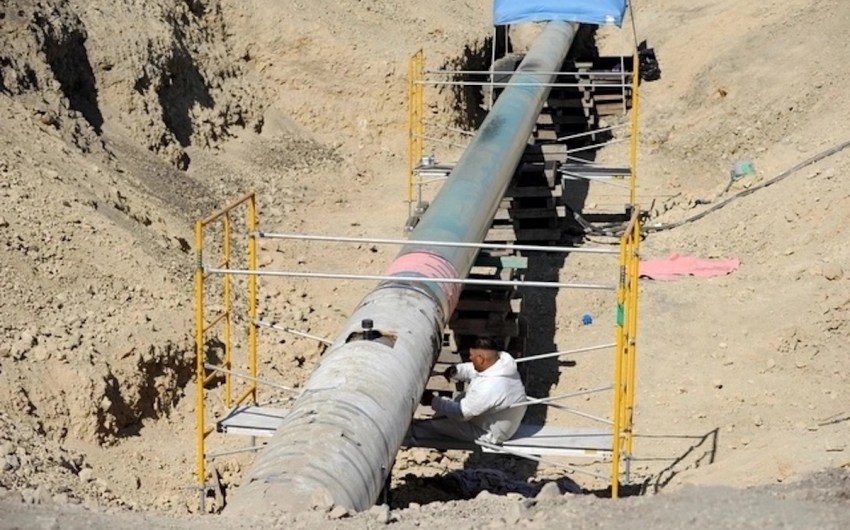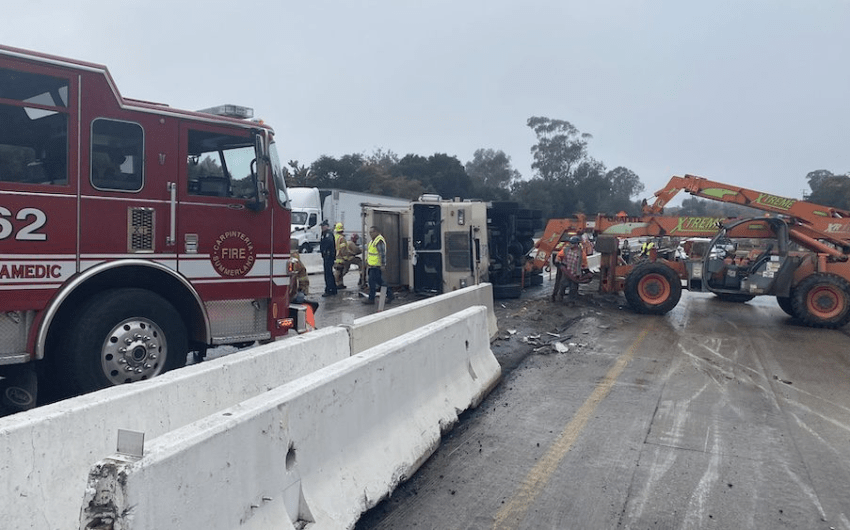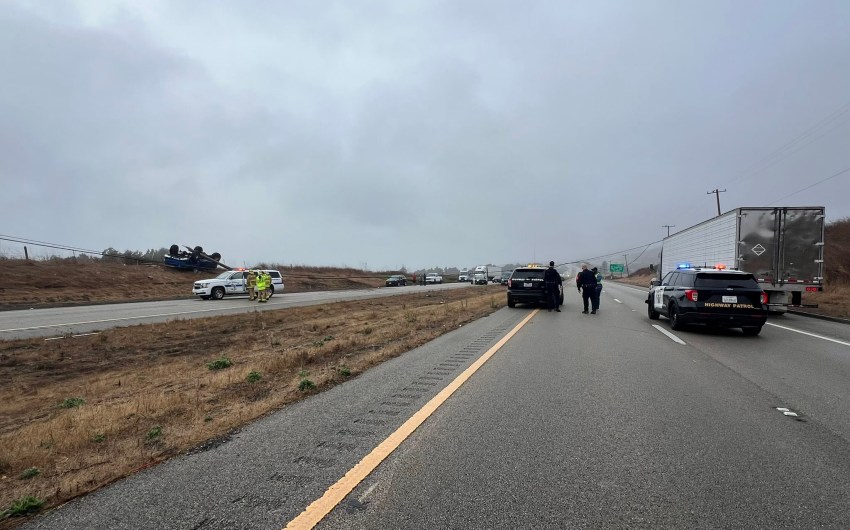ExxonMobil Dismisses Court Bid to Truck Oil in Santa Barbara
Environmental Organizations Celebrate Dismissal as End of Plan to Revive Offshore Platforms

ExxonMobil is abandoning its legal challenge against Santa Barbara County, effectively ending the company’s proposal to transport truckloads of oil up and down the coast, which the company had proposed in order to revive three shutdown drilling platforms off the Gaviota shore.
The proposal would have allowed the company to truck millions of gallons of oil per week on Highway 101 and Route 166, an alternate way to move the crude oil after the pipeline broke in 2015, causing a massive oil spill emanating from Refugio. When the Santa Barbara County Board of Supervisors denied the trucking plan, ExxonMobil filed a lawsuit challenging the decision. On Thursday, ExxonMobil notified the U.S. District Court that it would be dismissing its lawsuit, which had created an immense amount of pushback from environmental advocates, including those from the Environmental Defense Center and the Center for Biological Diversity.
“ExxonMobil’s plan to restart its offshore platforms and truck millions of gallons per week through Santa Barbara county was reckless, dangerous, and totally unwelcome by this community,” said Linda Krop, chief counsel of the Environmental Defense Center. “Recent oil tanker-truck accidents and offshore oil spills show just how dangerous this plan was. Our research revealed that there have been eight serious accidents involving tanker trucks along the proposed route in the last several years, resulting in deaths, oil spills, injuries, fires, and road closures.”
The county’s denial was upheld by the courts in September 2023, although there were still claims that were not yet settled in the case. ExxonMobil’s decision to dismiss the lawsuit, as well as the company’s recent sale of its offshore assets, is considered as Exxon’s abandonment of plans to resume operations along the Central Coast. However, the company that bought those assets — Sable Offshore Corporation — is working through the Office of the State Fire Marshal to restart the ruptured line, said Krop. The Fire Marshal’s office is developing a risk analysis for the pipeline, said Krop, which was heavily corroded at the time of the spill.
“It’s welcome news that Exxon’s dangerous trucking scheme is done with, but the fight to keep California’s coast safe from oil spills is far from over,” said Julie Teel Simmonds, a senior attorney at the Center for Biological Diversity. “All oil companies should take note that California’s coastal communities don’t want oil drilling and transport that puts people and wildlife at risk. We’ll work hard to make sure no company has an opportunity to cause California’s next catastrophic oil spill or accident.”
Environmentalists worked alongside Indigenous groups to oppose the company’s plan, and the dismissal is being celebrated as a win in the war against big oil in Santa Barbara County.
“Exxon has long been one of the most heinous polluters of Chumash homelands,” said Mati Waiya, executive director of the Wishtoyo Chumash Foundation. “We celebrate this massive victory against Exxon and warn any and all future resource extractors that we will not stop fighting.”
According to the Center for Biological Diversity, California suffers hundreds of oil-truck incidents a year, and many result in oil spills. There were 258 trucking accidents along the planned route from 2015 to 2021. Since 2007, eight oil tanker truck accidents have occurred that resulted in six deaths, multiple injuries, fires, road closures, and oil spills. In 2020, Santa Barbara county planning staff recommended a prohibition on oil tanker trucks on Route 166 after a major accident spilled more than 4,500 gallons into the Cuyama River.
Correction: An end to the trucking lawsuit ends that project, but the new owner of Exxon’s offshore assets may resume offshore production if the Office of the State Fire Marshal approves a restart of the pipeline.
Premier Events
Sat, Nov 30
11:00 AM
Santa Barbara
Mosaic Makers Market – Small Business Saturday
Sat, Nov 30
6:00 PM
Carpinteria
Beau James Wilding Band Live at the brewLAB
Thu, Dec 05
5:00 PM
Santa Barbara
First Thursday at Art & Soul in the Funk Zone
Fri, Nov 29
3:30 PM
Buellton
A Cowboy Christmas 2024
Fri, Nov 29
7:30 PM
Santa Barbara
Friendsgiving Country Night Black Friday
Sat, Nov 30
1:00 PM
Santa Barbara
Grateful Gathering-Live Dead & Jerry@The Brewhouse
Sat, Nov 30
1:00 PM
Santa Barbara
1st annual Funk Fest
Sat, Nov 30
9:30 PM
Santa Barbara
Numbskull Presents: The Cure & More DJ Night
Sun, Dec 01
5:00 PM
Santa Barbara
Paseo Nuevo Tree Lighting Ceremony
Fri, Dec 13
12:00 PM
Santa Barbara
Gem Faire
Fri, Dec 13
7:00 PM
Santa Barbara
SBHS 2024 Annual Fall Dance Recital
Sat, Nov 30 11:00 AM
Santa Barbara
Mosaic Makers Market – Small Business Saturday
Sat, Nov 30 6:00 PM
Carpinteria
Beau James Wilding Band Live at the brewLAB
Thu, Dec 05 5:00 PM
Santa Barbara
First Thursday at Art & Soul in the Funk Zone
Fri, Nov 29 3:30 PM
Buellton
A Cowboy Christmas 2024
Fri, Nov 29 7:30 PM
Santa Barbara
Friendsgiving Country Night Black Friday
Sat, Nov 30 1:00 PM
Santa Barbara
Grateful Gathering-Live Dead & Jerry@The Brewhouse
Sat, Nov 30 1:00 PM
Santa Barbara
1st annual Funk Fest
Sat, Nov 30 9:30 PM
Santa Barbara
Numbskull Presents: The Cure & More DJ Night
Sun, Dec 01 5:00 PM
Santa Barbara
Paseo Nuevo Tree Lighting Ceremony
Fri, Dec 13 12:00 PM
Santa Barbara
Gem Faire
Fri, Dec 13 7:00 PM
Santa Barbara
























